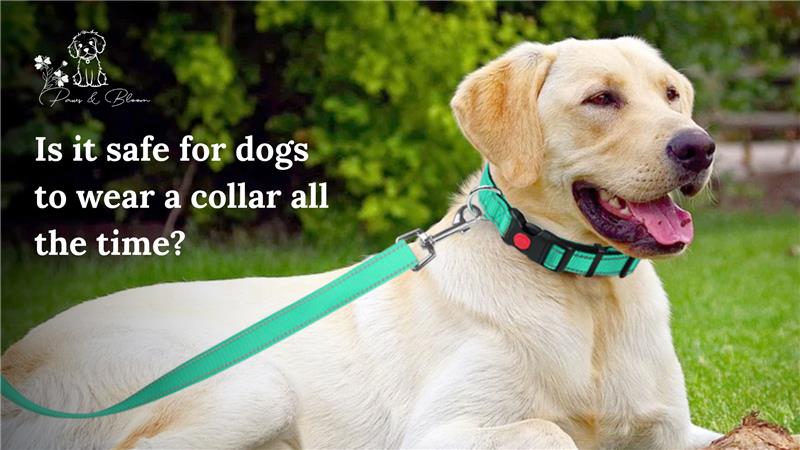Have you ever wondered, it is safe for dogs to wear a collar all the time? Many pet owners ask this question, especially when they want to keep their furry friend safe and easy to find. Collars on dogs are a big part of everyday life, but is it really okay for your dog to wear one every hour of the day? Let’s find out what’s best for your pup and how to keep them comfortable and happy.
If you’re looking for different types of dog collars and accessories, you’ll see there are many choices. Some collars are made for style, some for safety, and some for dogs with special needs. Picking the right one can make a big difference in your dog’s comfort.
Why Do Dogs Wear Collars?
Most people use a dog collar for identification. If your dog ever gets lost, a collar with an ID tag helps someone bring your pup home. Collars also make it easy to attach a leash for walks or trips to the vet. Some collars are even designed to be cute and show off your dog’s personality. For example, a Sierra Sunrise vegan dog collar is both colorful and comfortable, so your dog can look good and feel good at the same time.
The Good Side of Dog Collars
Dog collars are helpful for many reasons. They let you clip on a leash in seconds, which is great for quick walks or trips outside. A collar can hold your dog’s ID tag, which is important if your dog ever slips out the door. Many pet parents also use collars to show off their dog’s name or their favorite color. Some collars, like a Love Pink cork vegan dog collar, are made to be gentle on the skin and easy to clean.
What Happens If Dogs Wear Collars All the Time?
While dogs collars are useful, wearing them all the time can sometimes cause problems. Some dogs, especially those with sensitive skin, might get red spots or lose fur where the collar sits. If a collar is too tight, it could even make it hard for your dog to breathe or swallow. That’s why many experts say to check your dog’s collar often and make sure it’s not too tight or too loose.
Dogs that play a lot or wrestle with other dogs can also get their collars caught on things like fences, crates, or even another dog’s mouth. This can be dangerous and, in rare cases, lead to choking or injury. That’s why some dog trainers recommend taking off your dog’s collar during playtime or when your dog is home alone.
Can Collars Cause Health Problems?
Yes, sometimes. If a collar is too tight or worn all the time, it can rub against your dog’s neck and cause skin irritation, hair loss, or even sores. Some dogs might even have allergic reactions to certain materials, especially if they have sensitive skin. For these pups, it’s important to look for dog collars for sensitive skin, which are made from soft, gentle materials.
A collar that’s too tight can also press on your dog’s throat and make it hard to breathe, especially if your dog pulls on the leash. In some cases, this pressure can cause coughing, tracheal damage, or even thyroid problems. That’s why it’s important to choose safe dog collars and check the fit regularly.
How Should a Dog Collar Fit?
A dog collar should be snug but not tight. Most experts say you should be able to fit two fingers between the collar and your dog’s neck. If you can’t, the collar is too tight. If you can fit more than two fingers, it might be too loose and could slip off or get caught on something.
If your dog has a lot of fur or is still growing, check the fit often. Puppies grow quickly, and a collar that fits today might be too tight in just a few weeks. After grooming or a haircut, you may also need to adjust the collar size.
Should Dogs Sleep in Their Collars?
Many pet parents wonder, “Should my dog wear a collar at night?” While it’s not unsafe for dogs to wear collars while sleeping, nighttime is a great time to give your dog’s neck a break. Taking off the collar lets your dog’s skin breathe and can help prevent irritation. If you’re worried about your dog escaping at night, you can put the collar back on first thing in the morning.
When Should You Take Off Your Dog’s Collar?
There are times when it’s safer to take off your dog’s collar. Here are a few examples:
When your dog is playing with other dogs, when your dog is in a crate or kennel, during bath time or swimming, and at night while your dog sleeps. Taking off the collar during these times can help prevent accidents and keep your dog comfortable.
What Are the Best Dog Collars for Everyday Use?
The best dog collars are comfortable, safe, and easy to clean. Look for collars made from soft, breathable materials, especially for dogs with sensitive skin. Some of the best collars are made from vegan leather, cork, or hypoallergenic fabrics like neoprene or bamboo. If you want a collar that stands out, the Love Pink cork vegan dog collar is gentle, lightweight, and naturally resistant to odors.
What About Collars for Dogs With Sensitive Skin?
Some dogs have skin that gets red or itchy easily. For these pups, it’s important to pick dog collars for sensitive skin. Look for collars made from hypoallergenic materials like organic cotton, soft leather, or bamboo. Padded collars can also help by spreading out pressure and reducing friction.
Always check your dog’s neck for signs of irritation, like redness, bumps, or missing fur. If you notice any problems, try a different collar or give your dog some collar-free time.
Are There Safer Alternatives to Collars?
For some dogs, especially those who pull on the leash or have neck problems, a harness can be a safer choice. Harnesses spread pressure across the chest and shoulders instead of the neck, which can help prevent injury. However, even with harnesses, it’s still a good idea to use collars for ID tags and quick trips outside.
How Do You Choose the Right Collar for Your Dog?
Choosing the right collar depends on your dog’s size, activity level, and skin type. Here are some tips:
For active dogs, look for sturdy, washable collars. For dogs with sensitive skin, try soft, hypoallergenic materials. For fashion-forward pups, pick a collar in a fun color or pattern. For growing puppies, choose an adjustable collar that can grow with them.
If you want to see a wide range of options, the dog collars and accessories collection is a great place to start. You’ll find collars in different sizes, colors, and materials to fit every dog’s needs.
Real-Life Story: A Collar Adventure
Imagine a playful dog who loves to run and dig in the yard. One day, after a long play session, you notice a red spot on their neck where the collar sits. You take off the collar and see that the skin looks a little sore. After a quick wash and some rest without the collar, the spot heals. You decide to switch to a softer, vegan collar and start taking the collar off at night. Your dog seems happier, and the red spot never comes back.
Stories like this are common. Many pet parents find that giving their dog a break from the collar, especially at night or during play, helps prevent problems.
What Are the Most Common Problems With Collars on Dogs?
The most common issues with collars on dogs are:
Skin irritation or redness, hair loss around the neck, allergic reactions to certain materials, choking or getting caught on objects, and pressure on the neck or throat. To avoid these problems, always check the fit, clean the collar regularly, and choose safe dog collars made from gentle materials.
How Do You Keep a Dog Collar Clean?
Dog collars can get dirty quickly, especially if your dog loves to roll in the grass or splash in puddles. Wash your dog’s collar regularly with gentle soap and water. Let it dry completely before putting it back on your dog. This helps prevent skin irritation and keeps the collar smelling fresh.
If your dog is a chewer, you might want to read about how to stop chewing chaos with one simple spray. Sometimes, chewing can be a sign that your dog’s collar is uncomfortable or itchy.
Can Dogs Wear Collars With Allergies?
Yes, but you need to be careful. Dogs with allergies or sensitive skin need collars made from hypoallergenic materials. Soft leather, cork, or organic cotton are good choices. Avoid collars with rough edges, dyes, or chemicals that might cause a reaction.
If you notice your dog scratching or biting at their collar, try switching to a different material or giving your dog more collar-free time.
What Are the Signs a Collar Is Bothering Your Dog?
Watch for these signs: Scratching or biting at the collar, redness, bumps, or sores on the neck, hair loss where the collar sits, coughing or gagging, trying to slip out of the collar. If you see any of these signs, check the fit and try a different collar. Sometimes, just loosening the collar or switching to a softer material can solve the problem.
Can Puppies Wear Collars All the Time?
Puppies grow fast, so their collars can get tight quickly. Check the fit every week and adjust as needed. Puppies also love to play, so it’s safer to take off the collar during rough play or when they’re in a crate. For tiny pups, lightweight collars like the Sierra Sunrise vegan dog collar are gentle and easy to adjust.
Should Dogs Wear Collars Indoors?
It’s up to you. Some pet parents like to keep a collar on their dog indoors for safety, especially if the dog is a door-dasher. Others prefer to give their dog collar-free time when they’re safe at home. If your dog is crated or left alone, it’s safer to remove the collar to prevent accidents.
What About Special Collars?
There are many types of collars, from regular flat collars to martingale collars, breakaway collars, and more. Breakaway collars are designed to come off if they get caught, which can help prevent choking accidents. Martingale collars are often used for dogs with narrow heads, like greyhounds, to prevent slipping out.
If your dog has special needs, talk to your vet or trainer about the best dog collars for your situation.
How Often Should You Replace a Dog Collar?
Check your dog’s collar every month for signs of wear, like frayed edges, broken buckles, or stretched-out material. Replace the collar if it looks worn or doesn’t fit right anymore. A well-fitting, clean collar is one of the best ways to keep your dog safe and comfortable.
Can Collars Help With Training?
Some collars are made just for training. These dog collars can help teach your dog to walk nicely on a leash or stop pulling. Always use training collars with care and never leave them on your dog when you’re not around. For gentle training, choose a collar that’s soft and comfortable, like the Love Pink cork vegan dog collar.
Are Collars Safe for All Breeds?
Most breeds can wear collars safely, but some are more sensitive than others. Small breeds, puppies, and dogs with short necks or delicate skin need extra care. Wide, padded collars or those made from soft materials are often the best dog collars for these pups.
What If My Dog Hates Wearing a Collar?
Some dogs just don’t like collars. If your dog tries to take off the collar or seems upset, try a softer or lighter collar. Give your dog time to get used to it by putting it on for short periods and rewarding calm behavior. If your dog still hates the collar, talk to your vet or a trainer for advice.
Final Thoughts: Is It Safe for Dogs to Wear a Collar All the Time?
So, is it safe for dogs to wear a collar all the time? The answer is: sometimes, but not always. Collars are important for safety and identification, but wearing them 24/7 can cause problems like skin irritation, hair loss, or even choking in rare cases. The best plan is to check your dog’s collar often, choose safe dog collars made from gentle materials, and give your dog regular collar-free time, especially at night or during play.
If you’re looking for more tips on dog care or want to see the latest in dog collars and accessories, you can explore the collection for ideas. And if chewing is ever a problem, you might find help in this guide on how to stop chewing chaos with one simple spray.
Every dog is unique, so pay attention to what works best for your furry friend. With the right collar and a little care, your dog can stay safe, comfortable, and happy every day.


